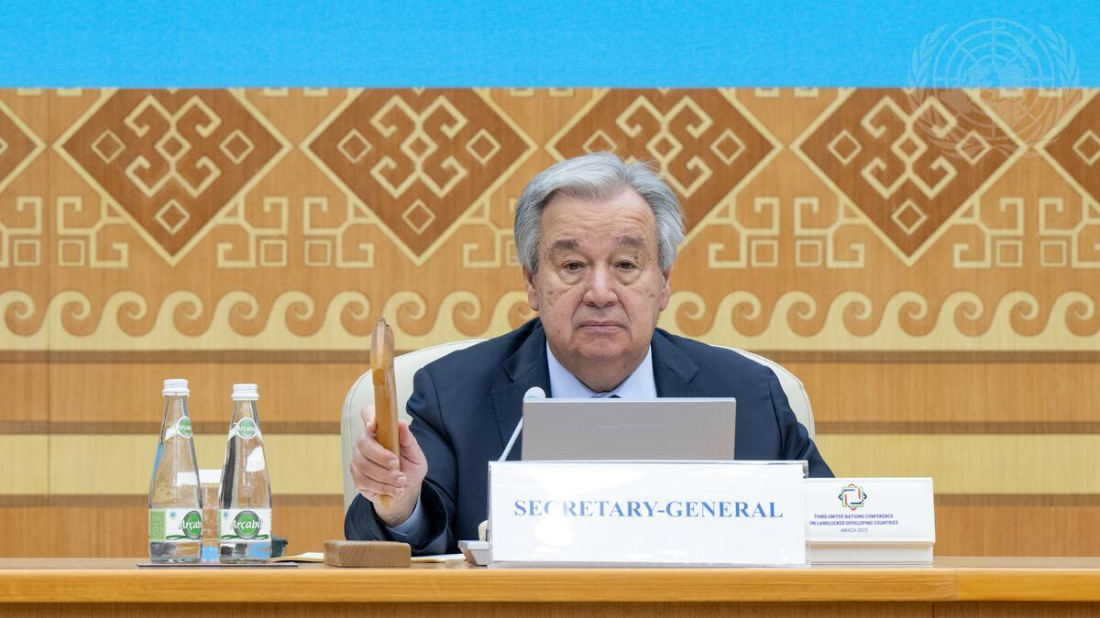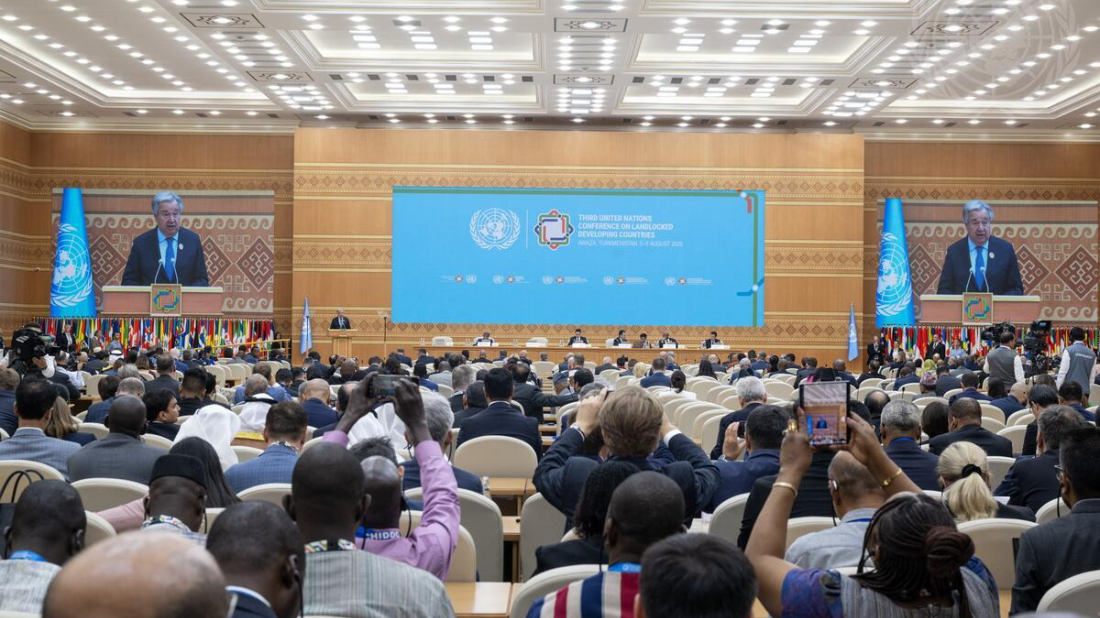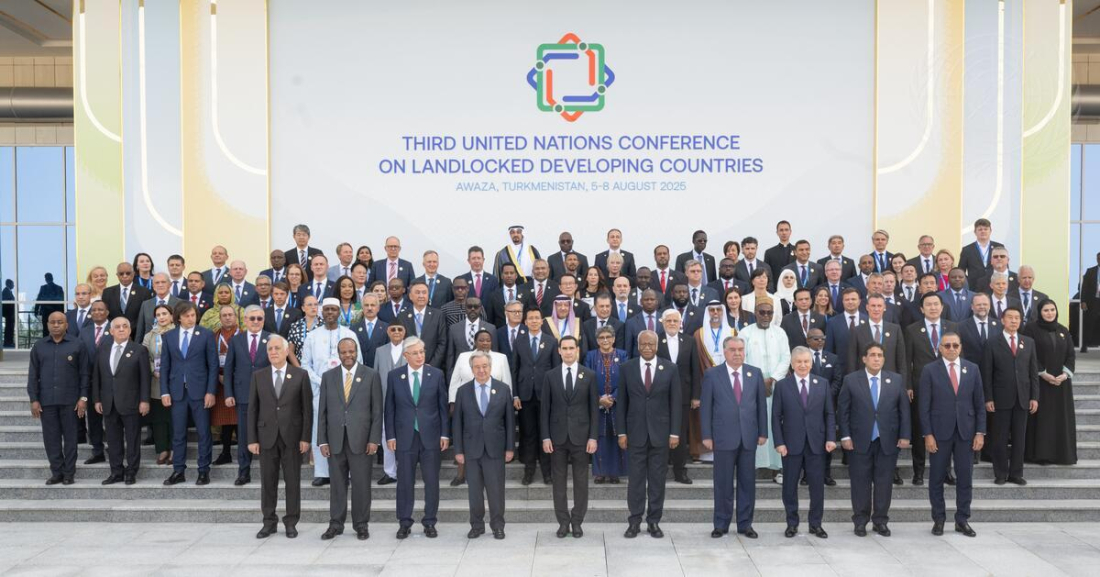Renee Nicole Good: Conflicting accounts threaten to overshadow fatal shooting of U.S. woman
Competing versions of what led to the fatal shooting of Renee Nicole Good by an Immigration Customs Enforcement agent are rife as President Trump and ...

Today, 6th August, marks the inaugural celebration of the International Day of Awareness of the Special Development Needs and Challenges of Landlocked Developing Countries, whose geographic disadvantage hinders their ability to diversify economies, compete effectively, and join global market.
The United Nations General Assembly recently adopted a resolution to observe this day globally, placing the unique needs of these countries high on the international agenda.
Speaking at the Third UN Conference on Landlocked Developing Countries on Tuesday (5th August), the UN Secretary-General António Guterres urged global leaders to rethink development for landlocked nations that continue to face the “daunting challenges” - steep barriers to trade, high transport costs, and limited access to global markets. He warned that the debt burden of these countries has reached “dangerous and unsustainable levels.”
"This conference must send a clear message: that geography does not determine destiny. It is not the fault of those landlocked countries that they do not have access to the sea," he stated. "The international community must make sure that such countries have access to opportunities, prosperity, hope and dreams and unlimited imaginations."

He stated that the General Assembly would continue to serve as the global platform to support landlocked developing countries (LLDCs).
The General Assembly will support this effort through annual monitoring of the Awaza Programme of Action, a high-level midterm review scheduled for 2029, and a strong commitment to dialogue and cooperation—first among landlocked and transit countries, second within the United Nations system, and third with all relevant stakeholders.
UN Secretary-General Guterres calls for action:
Economic Diversification and Digital Transformation:
- Invest in value-added industries, local innovation, and inclusive growth
- Bridge the digital divide to unlock AI, e-commerce, and smart logistics
Trade, Transit and Regional Connectivity:
- Upgrade infrastructure and simplify cross-border procedures
- Integrate LLDCs into global value chains and reform trade systems
Climate Action and Resilience:
- Double adaptation finance and build climate-resilient infrastructure
- Support LLDCs in green transitions with technology and partnerships
Financing and Partnerships:
- Reform global financial systems to ensure fair, accessible funding
- Scale concessional finance and unlock climate investment at speed

Of the total 32 landlocked developing countries in the world, 16 are in Africa, 10 are in Asia, 4 are in Europe, and 2 are in Latin America. LLDCs are home to over 570 million people, representing about 7% of the global population.
The smallest LLDC is Bhutan (less than one million people) and the largest is Ethiopia (135 million people).
The average distance of LLDCs to a seaport is 1370 km. Kazakhstan is located farthest from the sea (3750 km) followed by Afghanistan, Chad, Niger, Zambia, and Zimbabwe with distances from the nearest sea coast in excess of 2,000 km.
According to the United Nations Development Programme, half of all landlocked developing countries (LLDCs) are classified as least developed countries, facing vulnerabilities ranging from geographic isolation to structural economic weaknesses.
It says that many of the landloacked countries are mountainous countries, suffering from melting glaciers, water shortages, frequent landslides and reduced biodiversity, among other things. An estimated 54% of LLDCs’ land is classified as drylands, disproportionately affected by desertification, land degradation and drought.
Eleven of the 32 have lack access to affordable and clean energy. A half of population in the landlocked countries live with limited or no electricity. Many of these countries have electrification rates below 50%, with some below 27% for access to clean cooking.
Only 35% of people living in LLDCs can access the internet, significantly below the world average of 66%. While 95% of the population is covered by mobile networks, less than half of the population has access to 4G, which is crucial for digital trade.
Open-source intelligence (OSINT) sources reported a significant movement of U.S. military aircraft towards the Middle East in recent hours. Dozens of U.S. Air Force aerial refuelling tankers and heavy transport aircraft were observed heading eastwards, presumably to staging points in the region.
Snow and ice stalled travellers in northwest Europe on Wednesday, forcing around a thousand to spend the night in Amsterdam's Schiphol airport but delighting others who set out to explore a snow-blanketed Paris on sledges and skis.
Diplomatic tensions between Tokyo and Beijing escalated as Japan slams China's export ban on dual-use goods. Markets have wobbled as fears grow over a potential rare earth embargo affecting global supply chains.
Two people have been killed after a private helicopter crashed at a recreation centre in Russia’s Perm region, Russian authorities and local media have said.
Iran’s chief justice has warned protesters there will be “no leniency for those who help the enemy against the Islamic Republic”, as rights groups reported a rising death toll during what observers describe as the country’s biggest wave of unrest in three years.
Iran’s Commander-in-Chief of Army, Major General Amir Hatami has warned against hostile rhetoric from U.S. and Israeli officials. “Iran considers the intensification of the enemies' rhetoric against the Iranian nation as a threat and will not leave its continuation unanswered,” Hatami said.
Türkiye says it's prepared a self-sustaining international stabilisation force for Gaza and has already begun training, Defence Minister Yaşar Güler said, reiterating Ankara’s readiness to deploy troops to support humanitarian efforts and help end the fighting.
Turkish President Recep Tayyip Erdogan has dismissed reports that Nicolas Maduro, Venezuela’s toppled leader, was previously offered asylum in Türkiye.
Former NATO Deputy Secretary-General Rose Gottemoeller has warned that Europe could face a future without U.S. nuclear deterrence.
Start your day informed with AnewZ Morning Brief: here are the top news stories for the 8th of January, covering the latest developments you need to know.
You can download the AnewZ application from Play Store and the App Store.

What is your opinion on this topic?
Leave the first comment